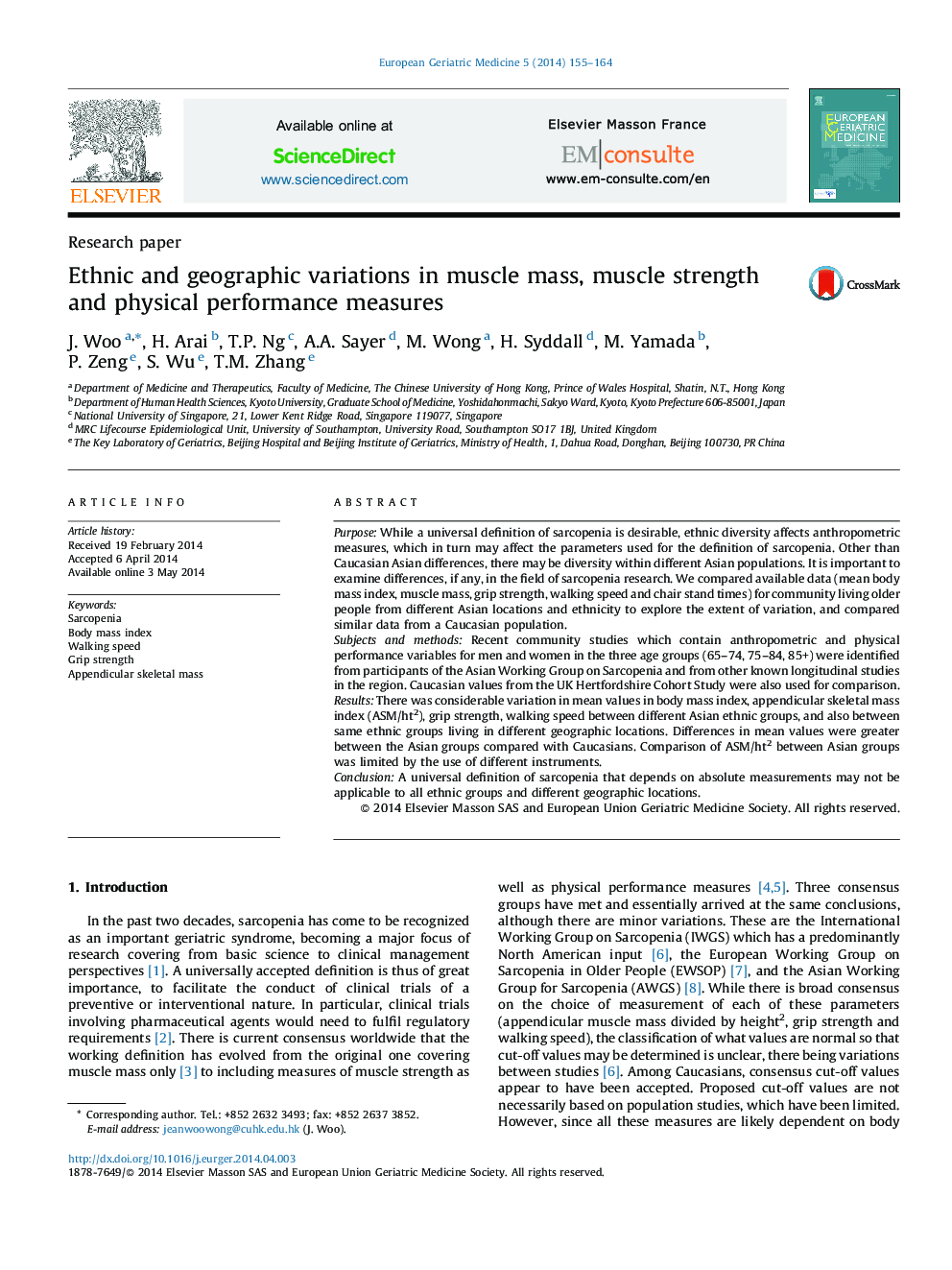| Article ID | Journal | Published Year | Pages | File Type |
|---|---|---|---|---|
| 3324594 | European Geriatric Medicine | 2014 | 10 Pages |
PurposeWhile a universal definition of sarcopenia is desirable, ethnic diversity affects anthropometric measures, which in turn may affect the parameters used for the definition of sarcopenia. Other than Caucasian Asian differences, there may be diversity within different Asian populations. It is important to examine differences, if any, in the field of sarcopenia research. We compared available data (mean body mass index, muscle mass, grip strength, walking speed and chair stand times) for community living older people from different Asian locations and ethnicity to explore the extent of variation, and compared similar data from a Caucasian population.Subjects and methodsRecent community studies which contain anthropometric and physical performance variables for men and women in the three age groups (65–74, 75–84, 85+) were identified from participants of the Asian Working Group on Sarcopenia and from other known longitudinal studies in the region. Caucasian values from the UK Hertfordshire Cohort Study were also used for comparison.ResultsThere was considerable variation in mean values in body mass index, appendicular skeletal mass index (ASM/ht2), grip strength, walking speed between different Asian ethnic groups, and also between same ethnic groups living in different geographic locations. Differences in mean values were greater between the Asian groups compared with Caucasians. Comparison of ASM/ht2 between Asian groups was limited by the use of different instruments.ConclusionA universal definition of sarcopenia that depends on absolute measurements may not be applicable to all ethnic groups and different geographic locations.
